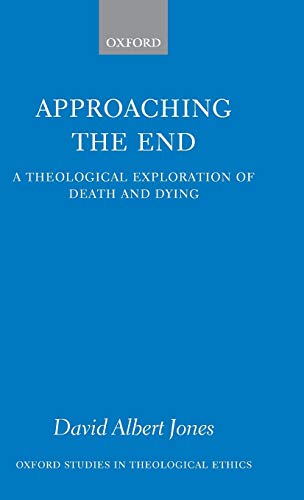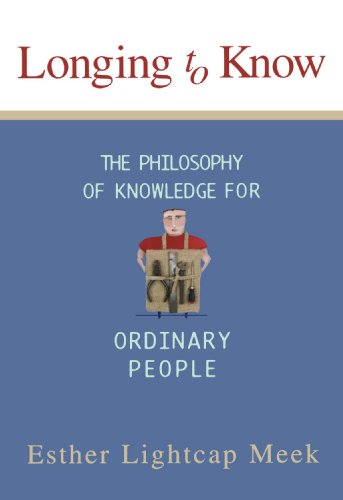American Evangelicals: A Contemporary History of a Mainstream Religious Movement
Written by Barry Hankins Reviewed By Nathan A. FinnAs Americans prepare for another presidential election, scores of journalists, pundits, and scholars continue to speculate about the role that evangelicals and other “values voters” will play in the results. Such prognostications have been standard fare since the mid-1970s, though they have reached a fevered pitch in the early twenty-first century. It seems that everyone is trying to define terms like “evangelical” and “evangelicalism,” understand common evangelical beliefs and practices, and determine the degree of evangelical cultural influence. Sociologists and historians in particular have devoted numerous monographs and scholarly essays to American evangelicalism over the last generation, especially the last decade. Several of those works have been written by Barry Hankins, a professor of history and church-state studies at Baylor University in Waco, Texas.
Hankins’s most comprehensive work to date is American Evangelicals: A Contemporary History of a Mainstream Religious Movement, part of Rowman & Littlefield’s Critical Issue in History series. Following scholars like Alan Wolfe and Laurence Moore, Hankins argues that evangelicals are both mainstream Americans in how they order their lives and religious outsiders by virtue of many of their core convictions (p. x). With this understanding in mind, Hankins’s book is intended to be an introduction to the evangelical movement, including its history, distinctives, and contemporary practices. The intended audience is primarily non-evangelicals who are curious about a movement that seems narrow enough that the media (simplistically) considers it a monolithic voting bloc, but diverse enough to include Christians from numerous theological traditions with varied beliefs and emphases.
Hankins structures his study into eight chapters, all of which either help define the nature of evangelicalism or provide insight into the ways evangelicals have historically engaged several hotly contested cultural issues. Chapter one discusses the origins of American evangelicalism as a multidenominational movement shaped by religious awakenings and focused on experiential religion. Following Scottish historian David Bebbington, Hankins argues that the four core convictions of evangelism are biblicism, crucicentrism (cross-centeredness), conversionism, and activism, all of which have been shaped by a revival tradition dating to the First Great Awakening. Chapter two rehearses the rise of modernist theology and its role in dividing evangelicals into fundamentalist and liberal camps. Hankins contends, “the fundamentalist-modernist controversy was not just about saving evangelical Protestantism, it was a full-scale war to save American culture” (p. 31).
Chapter three recounts the history of evangelical engagement with science, with special emphasis on the conflict with biological evolution. Hankins argues that an initial evangelical openness toward at least some forms of evolution was eclipsed during the twentieth century by activist support for the Creation Science and Intelligent Design movements, respectively. Chapter four describes the rise of premillennialism, especially dispensationalism, among American evangelicals. Hankins shows how works like The Late Great Planet Earth and the Left Behind novels have popularized dispensationalism in evangelical folk theology, though he also helpfully reminds readers that most evangelicals are not obsessed with end times speculation. Hankins’s fifth chapter is devoted to evangelical debates about gender and sexuality, which can be traced back to the revivals themselves. Hankins argues that as American culture became gradually more open to women’s rights, the divide between complementarian and egalitarian evangelicals was only furthered, though he also believes that practice is often not as far apart as theory in gender matters. Hankins notes that most evangelicals reject homosexuality as an unbiblical option.
Chapter six discusses evangelical political engagement, a theme that emerges in almost every chapter and is one of Hankins’s academic specialties. Hankins focuses upon the rise of the Religious Right in the last quarter of the twentieth century, though he also discusses historical precursors to the Religious Right as well as less conservative evangelical political activism. Chapter seven is devoted to evangelical engagement of the academy. Hankins notes the influence of popular thinkers like Francis Schaeffer, but focuses most of his attention on the ideas of evangelical historians who have weighed in on the relationship between faith and scholarship, especially Mark Noll and George Marsden. Chapter eight is a brief conclusion where Hankins revisits his contention that evangelicals are quintessentially American, often to the chagrin of some within the movement.
American Evangelicals serves as a helpful introduction to evangelicalism. Because of its introductory nature, Hankins’s book is mostly a synthesis of standard works in the field over the last generation or two rather than a constructive history of evangelicalism. Hankins tries to be fair to each of the individuals, sub-movements, and issues he discusses, even those with which he obviously disagrees. One of his aims is to show that American evangelicals are not as odd as outsiders sometimes think, and though Hankins possibly overemphasizes the mainstream nature of evangelicalism at times, he does a fine job of correcting some common misperceptions about evangelicals.
Despite the book’s commendable even-handedness, many evangelical readers will quibble with some of Hankins’s interpretations. One suspects that many theologically conservative evangelicals will think Hankins has overemphasized diversity, while some theologically progressive readers will claim there is not enough emphasis on diversity. Insiders and adherents will likely argue that Hankins misses the point in his discussions (and sometimes mild criticisms) of dispensationalism, complementarianism, the Religious Right, and especially the Intelligent Design movement. But Hankins is writing primarily for non-evangelicals, and readers will be hard-pressed to find a more sympathetic treatment of American evangelicalism that is aimed for those outside the movement.
American Evangelicals would be an excellent textbook for classes in American religious history or introductory Christianity courses. Pastors and other church leaders will find the book to be a useful resource for understanding the basic history of evangelical distinctives and debates. The book is popularly written, so it would also be appropriate for local church reading groups, Sunday School classes, or a short Christian education course.
Nathan A. Finn
Nathan A. Finn (PhD, Southeastern Baptist Theological Seminary) serves as provost and dean of the university faculty at North Greenville University. He is co-editor of the forthcoming volume Historical Theology for the Church (B&H Academic, 2021).
Other Articles in this Issue
Though his primary concern was how to persuade people from diverse backgrounds to embrace the gospel of Jesus Christ (1 Cor 9:12, 23), Paul, nonetheless, embodies a principle common to all who would provide leadership to a community comprised of a multiplicitous collection of rigid truth claims and behaviors...
The Ethnic Enemy—No Greek or Jew . . . Barbarian, Scythian: The Gospel and Ethnic Difference
by Keith FerdinandoWhatever 'globalisation' may be, it has been accompanied by insistent and sometimes violent affirmations of ethnic identity...
Despite a small flurry of attention over the past decade, Adolf Schlatter (1852–1938), Tübingen professor of New Testament and author of more than 440 written works, remains one of the most neglected yet illuminating theological voices of the past one hundred years...
Commentators have customarily interpreted Phil 2:12 as a reference to "working out" one's personal salvation...
Salvation History, Chronology, and Crisis:1 A Problem with Inclusivist Theology of Religions, Part 1
by Adam SparksA fundamental requirement in an inclusivist understanding of the relationship between Christianity and other religions is evidence of God's salvific activity outside of any knowledge of Christ...







